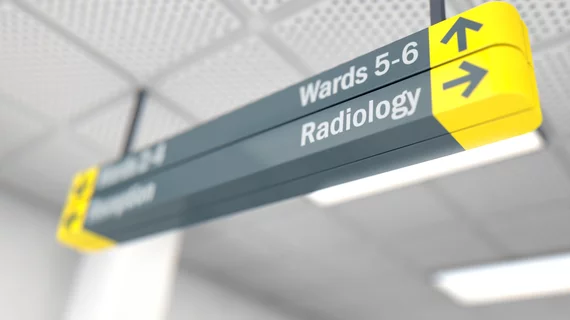A sudden fever is one of the many symptoms in patients with the novel coronavirus. And given that the radiology department is often the first stop for these individuals, imaging physicians need to be prepared.
Chinese researchers sought to do just that, detailing how their hospital’s radiology department is handling the COVID-19 epidemic, Feb. 26 in Academic Radiology. The group, from Shenzhen Second People’s Hospital—an “isolation hospital” near the Wuhan area—shared how it’s triaging patients, protecting staff and how other institutions can best prepare for the virus.
“Since the radiology department is often the first stop for patients who present with an acute febrile illness, managing these patients will play a key role in the diagnosis of individual patients and management of an epidemic situation,” said Han-Wen Zhang, MD, who also noted that their hospital has examined 1,467 suspected cases of COVID-19.
The World Health Organization has held off on labeling this outbreak a pandemic, but the virus is making its way across the globe. As of Thursday, Feb. 27, it has spread to 47 different countries, with 82,549 confirmed cases and 2,810 deaths. Some 33,000 patients have recovered after they were infected.
The “first concern” when dealing with infectious diseases such as COVID-19, the authors wrote, is protecting staff in the radiology department. At their hospital, patients undergo infrared temperature detection in the outpatient clinic, and move to a “fever control area” if they have even one of four predetermined qualifiers.
Outpatient staff then record epidemiological history and temperature, sending potentially infected patients to a fever clinic for treatment. There, they undergo nucleic acid testing and CT exams in an isolated area of the hospital. Medical personnel who travel to contaminated areas and have close contact with suspected or confirmed cases must stick to strict protection measures after washing their hands, including wearing:
1) A disposable work cap.
2) Protective glasses or face masks.
3) A protective medical mask.
4) Protective or isolation clothing.
5) Double-layered disposable latex gloves.
6) Disposable shoe covers.
Clinicians who may come into contact with patients suspected of having the disease must also follow strict guidelines, and patients are “forbidden” from entering the reading room, which is referred to as the “radiology clean area.”
Many with positive lab tests don’t have typical CT findings of 2019-nCoV pneumonia, and those with negative lab tests may also have findings typical of the disease, the authors wrote. The hospital isolates all patients before receiving their lab results, and during this time period, if testing comes back positive or if a patient demonstrates noteworthy imaging results, they are transferred to an infectious disease center for further evaluation.
Experts analyzing hundreds of COVID-19 cases have urged practitioners to use chest computed tomography as their primary screening tool. And a study published Feb. 22 in Clinical Imaging revealed that such scans can detect abnormalities in patients with lab-confirmed coronavirus before clinical symptoms appear.
The authors maintained that “strict isolation procedures” in the radiology department are critical to protecting staff and improving their work. Zhang and colleagues, along with many other experts, called on radiologists to help contain this growing epidemic.
“In conclusion, in an acute infectious disease epidemic, the radiology department plays an essential role in the diagnosis of infected patients. However, management of these potentially infected patients requires protection of both the medical staff and uninfected patients,” the authors concluded.
Read the entire study here for a more detailed breakdown of the radiology department’s process.

